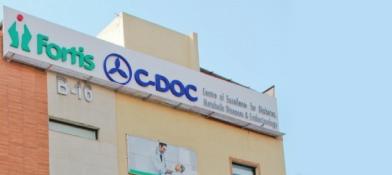Face-lift
Overview:
A facelift, medically known as rhytidectomy, is a surgery that enhances the look of a person by reducing the signs of aging. The procedure decreases the incidence of sagging skin, lines, and wrinkles by tightening the skin, altering the tissues under the skin, and removing excess skin, fat, or muscle to provide a youthful look. A facelift cannot change the features of the person or entirely block the aging process. The procedure cannot reduce wrinkles that are caused by sun damage or spots on the skin. These surgeries are highly customized procedures that are specifically tailored to each person's needs and goals.
What Are The Different Types Of Facelift Surgeries:
There are various facelift surgeries that depend on which areas of the face and neck are focused on. Types of facelift surgeries include:
- Traditional facelift: This type of facelift includes making incisions around the ears and the hairline of the person, as well as below the chin. The procedure involves cutting the skin off from the tissues beneath and tightening the muscles and other supporting structures in the face and the neck region. The excess fat is removed from the areas, and the skin is repositioned. If there is any excess layer of skin, it is removed to make the area look tighter and firmer. The method is best suited for people who want moderate facial lifting.
- Superficial Musculoaponeurotic System (SMAS) facelift (SMAS rhytidectomy): A SMAS facelift is a variant of the traditional facelift surgery and focuses on the lower portion of the face. The process involves tightening the muscle, removing excess skin and fat tissues from the cheek and lower parts of the face.
- Deep plane facelift: In this type of surgery, the doctor lifts the complete muscular layer of the face together with the fat and the skin to rework it. This procedure addresses the signs of aging in various areas of the face.
- Mid-facelift: A mid-facelift surgery targets the cheek portion of a person's face. The doctor rearranges the fat in the cheek and pulls the skin to give it a younger look.
- Mini-facelift: A mini-facelift procedure aims to pull up the lower part of the face and neck regions. The surgery is generally quicker and minimally invasive and is recommended for younger people who exhibit very early signs of aging and sagging of skin.
- Cutaneous (skin) facelift: Cutaneous facelifts involves workin only on the skin and targets the lower neck and face.
Facelift surgeries are combined with various other procedures that target specific organs or sections of the face. They include:
- Blepharoplasty, which is an eyelid-lifting procedure
- Rhinoplasty, which is a nose job.
- Facial implants.
- Brow lifting procedure.
- Liquid facelift, which includes injectable dermal fillers in the face.
- Rejuvenation of the jawline.
- Chemical peeling.
- Laser skin resurfacing.
Who Qualifies For A Facelift:
- The person should be physically fit and not have any health conditions that can influence the body to heal after the procedure and lead to complications.
- The person should be a non-smoker.
- They should be mentally health and must have realistic expectations from the surgical procedure to avoid any confusion and misgivings later.
- The age of the person should be between 40 to 60 years.
The Procedure:
- The doctor discusses the goals and outcomes of the surgery in detail based on the person's requirements and expectations. The medical and surgical history of the person is checked, and any allergies or medicines and supplements taken by the person are noted. The doctor may inquire about the person's habits, like smoking and alcohol use. The comple physical and mental health of the person is assessed.
- The face and neck of the person are checked and measured through clinical photographs to help plan the surgery better.
- The doctor discusses the various options and procedures with the person, along with the risks involved.
- The person needs a blood test and adherence to the doctor's instructions regarding the restriction of certain medications like anti-inflammatory drugs, topical applications on the face, smoking, and certain foods and beverages.
- Someone should be arranged to stay with the person after the surgery and drive them home.
- The doctor performs the surgery under anesthesia, and depending on the type of facelift, the doctor makes the incisions in the specific parts of the face.
- After the procedure, the doctor seals the incision with dissolvable stitches or regular stitches that need removal after a few days. They may also use skin glue to close the incision.
- After the surgery the person needs to stay in a recovery room for observation till they wake up and can leave the hospital once they are alert and stable after a few hours.
- There may be a bandage around the face to help reduce the swelling and bruising. The doctor may place drainage tubes.
- It is important to follow the instructions given by the doctor for the recovery process which includes care at the site of incision, drains, medication for pain, exercising and strenuous activities, and follow-up appointments.
- Most people recover within two to three weeks of the surgery.
Risks After A Facelift Surgery:
- Anesthesia complications.
- Infection.
- Issues with the healing of the wound site.
- Hematoma- blood collection at the surgical site.
- Alterations in skin sensation or numbness.
- Injury to the facial nerves.
- Hair loss at the incision sites.
- Scarring.
- Swelling.
- Irregularities in the color of the skin.
The effects of facelift surgeries usually last around seven to 10 years. The person, however, continues to age after the procedure.
The doctor should be contacted when the following symptoms occur:
- Excessive bleeding.
- Heavy swelling.
- Fever.
- Abnormal discharge from the incision site.
- Excruciating pain.
- Coming out of stitches before their due date.
Conclusion:
Facelifts are a common cosmetic surgery and mostly have high success rates. However, it's essential for the person to be in good mental and physical health and not take any blood thinning medications, be a smoker, or have any significant weight changes to avoid any complications in the procedure.
Another very important consideration is to be very clear about the outcome and keep the expectations realistic. The best way is to discuss the concerns and expectations with the doctor in detail to prevent any confusion at a later stage. Facelift should be a collaboration between the person and the medical team for the best possible outcomes.
Popular Searches :
Hospitals: Cancer Hospital in Delhi | Best Heart Hospital in Delhi | Hospital in Amritsar | Hospital in Ludhiana | Hospitals in Mohali | Hospital in Faridabad | Hospitals in Gurgaon | Best Hospital in Jaipur | Hospitals in Greater Noida | Hospitals in Noida | Best Kidney Hospital in Kolkata | Best Hospital in Kolkata | Hospitals in Rajajinagar Bangalore | Hospitals in Richmond Road Bangalore | Hospitals in Nagarbhavi Bangalore | Hospital in Kalyan West | Hospitals in Mulund | Best Hospital in India | | Cardiology Hospital in India | Best Cancer Hospital in India | Best Cardiology Hospital in India | Best Oncology Hospital In India | Best Cancer Hospital in Delhi | Best Liver Transplant Hospital in India
Doctors: Dr. Rana Patir | Dr. Rajesh Benny | Dr. Rahul Bhargava | Dr. Jayant Arora | Dr. Anoop Misra | Dr. Manu Tiwari | Dr. Praveer Agarwal | Dr. Arup Ratan Dutta | Dr. Meenakshi Ahuja | Dr. Anoop Jhurani | Dr. Shivaji Basu | Dr. Subhash Jangid | Dr. Atul Mathur | Dr. Gurinder Bedi | Dr. Monika Wadhawan | Dr. Debasis Datta | Dr. Shrinivas Narayan | Dr. Praveen Gupta | Dr. Nitin Jha | Dr. Raghu Nagaraj | Dr. Ashok Seth | Dr. Sandeep Vaishya | Dr. Atul Mishra | Dr. Z S Meharwal | Dr. Ajay Bhalla | Dr. Atul Kumar Mittal | Dr. Arvind Kumar Khurana | Dr. Narayan Hulse | Dr. Samir Parikh | Dr. Amit Javed | Dr. Narayan Banerjee | Dr. Bimlesh Dhar Pandey | Dr. Arghya Chattopadhyay | Dr. G.R. Vijay Kumar | Dr Ashok Gupta | Dr. Gourdas Choudhuri | Dr. Sushrut Singh | Dr. N.C. Krishnamani | Dr. Atampreet Singh | Dr. Vivek Jawali | Dr. Sanjeev Gulati | Dr. Amite Pankaj Aggarwal | Dr. Ajay Kaul | Dr. Sunita Varma | Dr. Manoj Kumar Goel | Dr. R Muralidharan | Dr. Sushmita Roychowdhury | Dr. T.S. MAHANT | Dr. UDIPTA RAY | Dr. Aparna Jaswal | Dr. Ravul Jindal | Dr. Savyasachi Saxena | Dr. Ajay Kumar Kriplani | Dr. Nitesh Rohatgi | Dr. Anupam Jindal
Specialties: Heart Lung Transplant | Orthopedic | Cardiology Interventional | Obstetrics & Gynaecology |
Onco Radiation | Neurosurgery | Interventional Cardiology | Gastroenterologist in Jaipur | Neuro Physician | Gynecologist in Kolkata | Best Neurologist in India | Liver Transfer | Best Cardiologist in Delhi



























